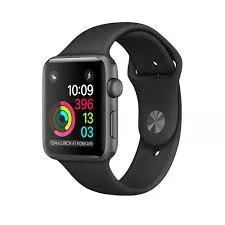Released in April 2015, the Apple Watch Series 1 marked Apple’s foray into the wearable technology market. As the first iteration of the Apple Watch series, it introduced consumers to a new realm of convenience, health tracking, and connectivity. Key features of the Series 1 included a square Retina display, heart rate sensor, accelerometer, gyroscope, and a water-resistant design. Powered by Apple’s watch OS, it seamlessly integrated with iPhone to deliver notifications, fitness tracking, and a myriad of apps right to the wrist.
Historical Context Of The Apple Watch Series 1
The Apple Watch Series 1 debuted with a starting retail price of $349 for the 38 mm model and $399 for the 42 mm variant. Over the years, subsequent releases of newer models and advancements in technology led to price drops and changes. As newer iterations like the Series 2, 3, 4, and 5 were introduced, the Series 1 experienced significant price reductions, making it more accessible to a broader audience.
Resale Value Trends
Since its release, the resale value of the Apple Watch Series 1 has undergone predictable depreciation, albeit at a slower rate compared to some other electronic devices. Initially, resale prices held relatively strong, reflecting the novelty and demand for wearable technology. However, as newer models entered the market, the value of the Series 1 gradually declined.
Analyzing historical data reveals that the depreciation rate of the Apple Watch Series 1 stabilized after the initial few years post-launch. While early adopters may have experienced more significant losses, the resale value has since plateaued to a certain extent, indicating a stable secondary market for the device.
Marketplace Analysis
In 2024, the resale value of the Apple Watch Series 1 is influenced by various market conditions. Demand remains steady among consumers seeking an entry-level smartwatch experience with basic features like fitness tracking and notifications. However, the availability of newer models with enhanced capabilities may limit the appeal of the Series 1 to a niche market segment.
Factors such as supply, consumer preferences, and technological advancements also play a role in determining the resale value. While some users may prioritize affordability and simplicity, others may opt for the latest features and innovations offered by newer models.
In 2024, users have various options for selling or purchasing a used Apple Watch Series 1. Online marketplaces like eBay, Craigslist, and Facebook Marketplace offer platforms for individuals to buy and sell directly to one another. These platforms provide flexibility in pricing and negotiation but require sellers to manage listings and handle transactions independently.
Additionally, trade-in programs offered by retailers and manufacturers allow users to exchange their old devices for credit towards the purchase of newer models. Local resale shops and electronics retailers may also accept used Apple Watches for resale, providing convenience for sellers and assurance for buyers.
Condition Grading
Assessing the condition of an Apple Watch Series 1 is crucial for determining its worth in 2024. Factors such as wear and tear, battery health, and functionality significantly impact resale value. A well-maintained device with minimal signs of usage commands a higher price compared to one with visible wear or performance issues.
Potential buyers are likely to scrutinize the condition of the device before making a purchase decision, emphasizing the importance of accurately assessing and representing the product’s condition.
Recent Sales Data
Recent sales data and pricing trends for used or refurbished Apple Watch Series 1 devices in 2024 reflect a stable secondary market. While prices have depreciated compared to the original retail value, they have remained relatively consistent over the past few years. Factors such as condition, accessories included, and market demand influence pricing variations across different listings and platforms.
For sellers looking to maximize the value of their used Apple Watch Series 1 in 2024, presenting the device in the best possible condition is paramount. Cleaning the device, providing accurate descriptions, and including original accessories can enhance its perceived value and attract potential buyers. Additionally, researching current market prices and setting competitive yet realistic asking prices can expedite the selling process.
On the other hand, buyers should carefully inspect listings and communicate with sellers to clarify any questions or concerns regarding the device’s condition and functionality. Comparing prices across multiple platforms and considering factors such as warranty coverage and return policies can help buyers make informed purchasing decisions.
Conclusion
The Apple Watch Series 1 continues to hold relevance in the wearable technology landscape, offering a blend of functionality, affordability, and simplicity to users. While newer models may overshadow its capabilities, the Series 1 remains a viable option for consumers seeking basic smartwatch features at a budget-friendly price point.

